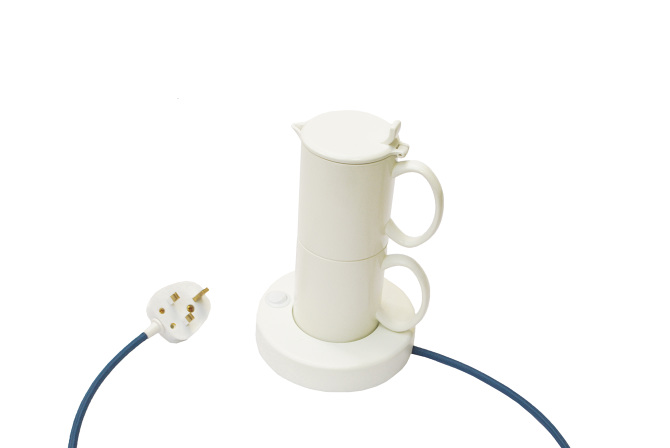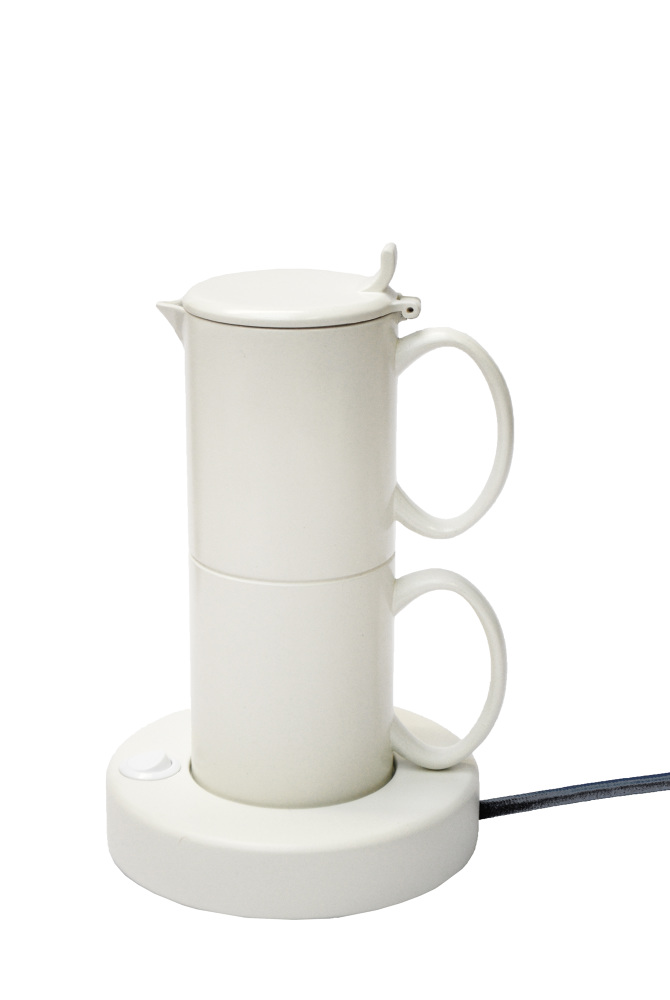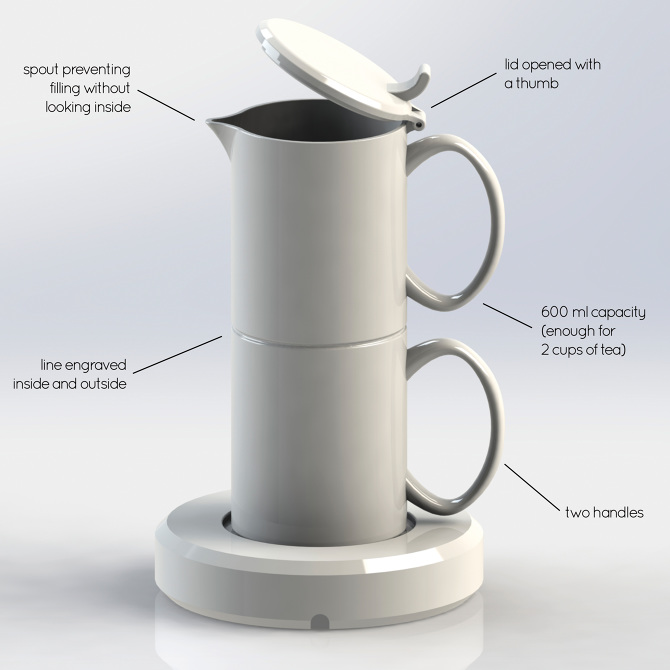Cup-Shaped Kettle Can Save Millions in Energy Costs

Heating water for tea might seem like the simplest act of your day, but most of us overfill the kettle and waste tons of energy every day. Electric kettles cost an average of £24 (or over $40 US) to operate, a number that could be greatly reduced if we had a more accurate way of telling how much water we need when filling up the kettle to boil.
The standard electric kettle doesn’t offer a very effective visual indication of how much water is being poured into it. Most have markers indicating the number of ounces or milliliters contained, but that’s an abstract concept for most minds. The KTTL from designer Anna Czaniecka saves energy by putting tea kettle portion sizes into a more understandable form: cups of tea.
The KTTL is shaped like two cups of tea stacked one atop the other. Figuring out how much water to boil for your cup of tea is as simple as filling the kettle up to the line between the two “cups” for one cup of tea, or all the way to the top for two cups.
The designer figures that British households alone could save £68 million annually by more accurately measuring their water and cutting down on wasted energy. The design was shown at the Kingston University graduate show 2014 as a 3D printed prototype. Czaniecka meant the design to highlight the problem of energy waste and hopes to one day put the product into wide-scale production.
Here’s what the designer has to say about it:
“facts:
a) kettle is one of the most energy consuming appliances
b) 75% of people in the UK overfill their kettles
c) it costs on average £24 per year to use a kettle
d) 40% of people boil a kettle 5 times a day or more
It’s hard to translate the capacity of a mug into a kettle. As a result we boil more water than we need which means using more electricity, longer boiling time and higher bills.”
KTTL is designed to get around these shortcomings, and it does so in a smart, streamlined compact package.







